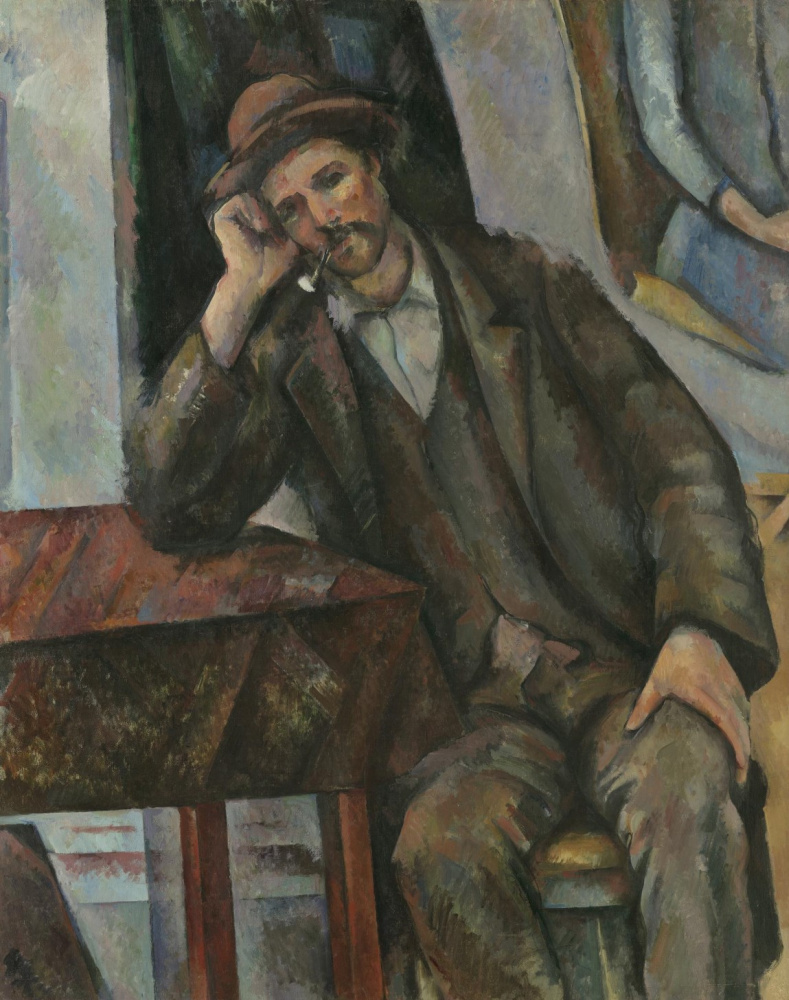log in
Enter site
Login to use Arthive functionality to the maximum
Man Smoking a Pipe
Paul Cezanne • Painting, 1896, 91×72 cm
Description of the artwork «Man Smoking a Pipe»
Cézanne spent the last 16 years of his life in his hometown, Aix-en-Provence. He lived as a hermit next to the quarry, sometimes went to church, rarely met with people, but willingly shared his thoughts on art with young artists who by the end of the XIX century were making pilgrimage trips to the Provence genius. He maintained communication with only few people: a cook, a gardener and peasants from the farm. People who lead slow and steady lives, doing the same thing, dressing in the same clothes, walking the same roads, not leaving their homes, getting up with the sunrise. They seem as ancient as the Mount Sainte-Victoire in Axe or the old pine. The time of their life in this area becomes physically visible and palpable. It's in their figures and poses. Like the lifetime of the pine is seen in the curves and inclination of the trunk, and the lifetime of the mountain - in its geological picture. Cézanne said: "Most of all, I admire the faces of people who have grown old without drastically changing their habits, who just go along with the laws of time."
A man with a pipe is Alexander, one of the local peasants. In the same hat and with the same pipe, he appeared in a series of paintings by Paul Cézanne "The Card Players". "Man Smoking a Pipe" is a painting beyond the categories: it's neither a genre painting, nor a portrait. It deprives us of the temptation to see symbols and psychological overtones. And leaves us alone with the painting. Even though the man's face is turned to us, it tells nothing abut him. His eyes are dark dots, having no depth and traditional shine in them. But under the powerful presence of his figure in the space, the corners crumble, the walls move apart and the furniture rises above the floor. This is not a portrait, this is the phrase "I exist" expressed by means of painting.
Author: Anna Sidelnikova
A man with a pipe is Alexander, one of the local peasants. In the same hat and with the same pipe, he appeared in a series of paintings by Paul Cézanne "The Card Players". "Man Smoking a Pipe" is a painting beyond the categories: it's neither a genre painting, nor a portrait. It deprives us of the temptation to see symbols and psychological overtones. And leaves us alone with the painting. Even though the man's face is turned to us, it tells nothing abut him. His eyes are dark dots, having no depth and traditional shine in them. But under the powerful presence of his figure in the space, the corners crumble, the walls move apart and the furniture rises above the floor. This is not a portrait, this is the phrase "I exist" expressed by means of painting.
Author: Anna Sidelnikova


